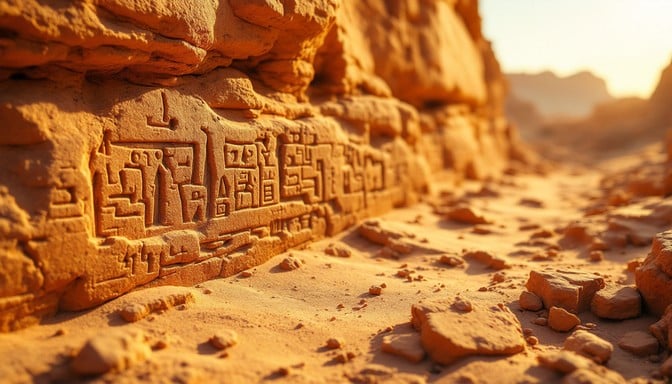The Bimini Road is an underwater rock formation near the North Bimini Island in the Bahamas. Sometimes referred as the Bimini Wall, this construction consists of a 0.8 km (0.50 mi)-long northeast-southwest linear feature composed of roughly rectangular limestone blocks. Various claims have been made for this feature being either a wall, road, pier, breakwater, or another ancient man-made structure. However, it is often argued that credible evidence or arguments lack any evidence for such origin.
It was September 2 of 1968, when Joseph Manson Valentine, Jacques Mayol, and Robert Angove encountered at 5.5 meters or 18 feet what appeared as a “pavement”. The noticeably rounded stones of varying size and thickness with a northeast-southwest linear feature are now commonly known as either the “Bimini Road” or the “Bimini Wall”.

 The Bimini Wall and two linear features lying shore-ward of it are composed of flat-lying, tabular, and roughly rectangular, polygonal, and irregular blocks. The Bimini Road, the largest of three linear features, is 0.8 km (0.50 mi) long, a northeast/southwest-trending feature with a pronounced hook at its southwest end. It consists of stone blocks measuring as much as 3-4 meters (9-12 feet) in horizontal dimensions with the average size being 2-3 meters (6-9 feet). The larger blocks show complementary edges, which are lacking in the smaller blocks. The two narrower and shorter, approximately 50 and 60 meters (160 and 200 ft)-long linear features lying shore-ward of the Bimini Road consist of smaller tabular stone blocks that are only 1–2 meters (3–7 ft) in maximum horizontal breadth. The blocks consist of limestone composed of carbonate-cemented shell hash that is called “beachrock” which is native to the Bahamas. Having rounded corners, the blocks composing these pavements resemble giant loaves of bread. The highly rounded nature of the blocks forming the Bimini Road indicates that a significant thickness of their original surface has been removed by biological, physical, and chemical processes. Given the high degree of erosion, it is highly implausible that any original surface features including any tool marks and inscriptions would have survived.
The Bimini Wall and two linear features lying shore-ward of it are composed of flat-lying, tabular, and roughly rectangular, polygonal, and irregular blocks. The Bimini Road, the largest of three linear features, is 0.8 km (0.50 mi) long, a northeast/southwest-trending feature with a pronounced hook at its southwest end. It consists of stone blocks measuring as much as 3-4 meters (9-12 feet) in horizontal dimensions with the average size being 2-3 meters (6-9 feet). The larger blocks show complementary edges, which are lacking in the smaller blocks. The two narrower and shorter, approximately 50 and 60 meters (160 and 200 ft)-long linear features lying shore-ward of the Bimini Road consist of smaller tabular stone blocks that are only 1–2 meters (3–7 ft) in maximum horizontal breadth. The blocks consist of limestone composed of carbonate-cemented shell hash that is called “beachrock” which is native to the Bahamas. Having rounded corners, the blocks composing these pavements resemble giant loaves of bread. The highly rounded nature of the blocks forming the Bimini Road indicates that a significant thickness of their original surface has been removed by biological, physical, and chemical processes. Given the high degree of erosion, it is highly implausible that any original surface features including any tool marks and inscriptions would have survived.
Various articles and books greatly exaggerate the regularity and rectangularity of the unregular disposition of the rocks that form the Bimini Road. The features composing the blocks features are heavily eroded and the geological formation do not paint a clear picture of the origin, the history, nor the possible function of the structure.
Claims of a human origin. Although it is generally considered to be a naturally occurring geological feature, many consider the Bimini undersea formation to be man-made as opposed to natural beachrock. As a result of the unusual arrangement and shape of the stones, some believe that the formation represents the remains of an ancient road, wall, or some other construction feature. For this literature the Bimini Road is an artificial structure with “little doubt” that the accuracy of the massive stone blocks must have been cut by people.





